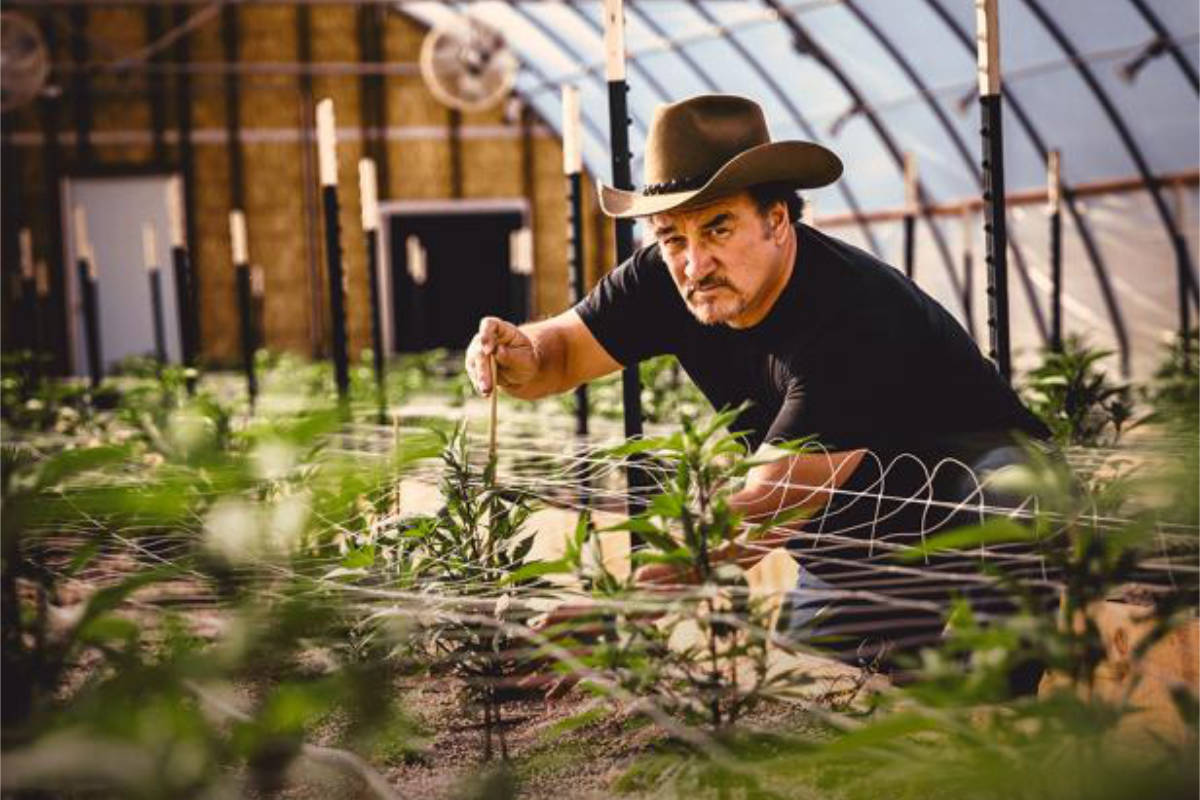When it comes to being a cannabis crusader, being on a “Mission from God” is a pretty compelling commandment.
Yet that’s what we see this week when Jim Belushi returns on the second episode of the three-part series, Growing Belushi, which presents an inside look at the workings of Belushi’s cannabis farm and the trials and tribulations of getting it to market. In this episode, Belushi needs to secure the rights to use the “Blues Brothers” brand for his cannabis from original Blues Brother and Canadian actor Dan Aykroyd. Jim Belushi sings with Aykroyd as a “guest” Blues Brother in a concert, then attempts to convince Aykroyd to use the Blues Brothers name for his cannabis products, but can only get a “maybe”- which Belushi interprets as “how they say no in Canadian”. Eventually Aykroyd agrees that since Blues Brothers is a legendary brand, if Belushi fulfill a “Mission from God” to secure seeds from three legendary Columbian cannabis strains (Punta Roja, Santa Marta Gold, and Mango Biche), then he can use the Blues Brothers brand to market his product, and Belushi is off to Columbia.
Long-time followers of the cannabis scene can delight in the appearance of the Godfather of Cannabis, Steve DeAngelo, meeting up with Belushi in Bogota to help him search for the hard to find Columbian strains. Steve DeAngelo is an activist and pioneer of legal cannabis in California and has been instrumental in shaping the state of the cannabis industry as it stands today. Belushi’s quest takes him from Bogota to Medellín deep in the Andes mountains, from organic farms to pot festivals. The episode does a great job of showcasing the people, culture, and beautiful geography of Columbia, which itself is worth the watch.
Although viewers can expect similar scripted reality gags and drama from the first episode of Growing Belushi (his incompetent farm manager Chris losing the precious seeds they came to Columbia for and getting the “Belushi cold shoulder”, for example), the second episode takes a decidedly more serious turn, tackling sobering topics such as that of former Columbian drug lord and local philanthropist Pablo Escobar. The episode does a good job of portraying the double-edged sword of Escobar’s strong contributions to the local economy and community of Medellin, while pointing out that he was also involved in truly evil dealings as a drug lord, killing innocent families and children.
The episode wraps up with Belushi taking a helicopter flight to see the countryside of Columbia, where he flies over the “Red Zone” in the north near Venezuela, a dangerous area inundated with coca fields for the production of cocaine. In a somber tone, Belushi ponders whether the cocaine that killed his brother, Saturday Night Live comedian and actor John Belushi, came from these very coca fields, and recognizes that these farms are part of a system that ultimately ends up hurting people and families and deliberates on whether these fields would be better if they were produced cannabis instead of coca. Although there is a bit of colonialist mentality in this sentiment (lacking recognition that coca plants themselves have important traditional medicinal value and use in the mountains of South America, and much of the actual problems come from American exploitation around the cocaine produced from coca), the personal connection to the loss of his brother from an overdose of cocaine and the recognition that these coca farms are family farms that could potentially be transformed to grow cannabis which is becoming widely used as a healing medicine, does warrant serious consideration from viewers.
The next and final episode of the series continues with the visit to Columbia and the search for the enticing but elusive Santa Marta Gold seeds (will Belushi’s Mission from God succeed?), and a harvest party back on the Belushi farm with a visit from local police. The next episode of Growing Belushi can be seen Wednesday on Discovery.
——-
Salina May is a Lethbridge-based cannabis writer and environmental technologist

